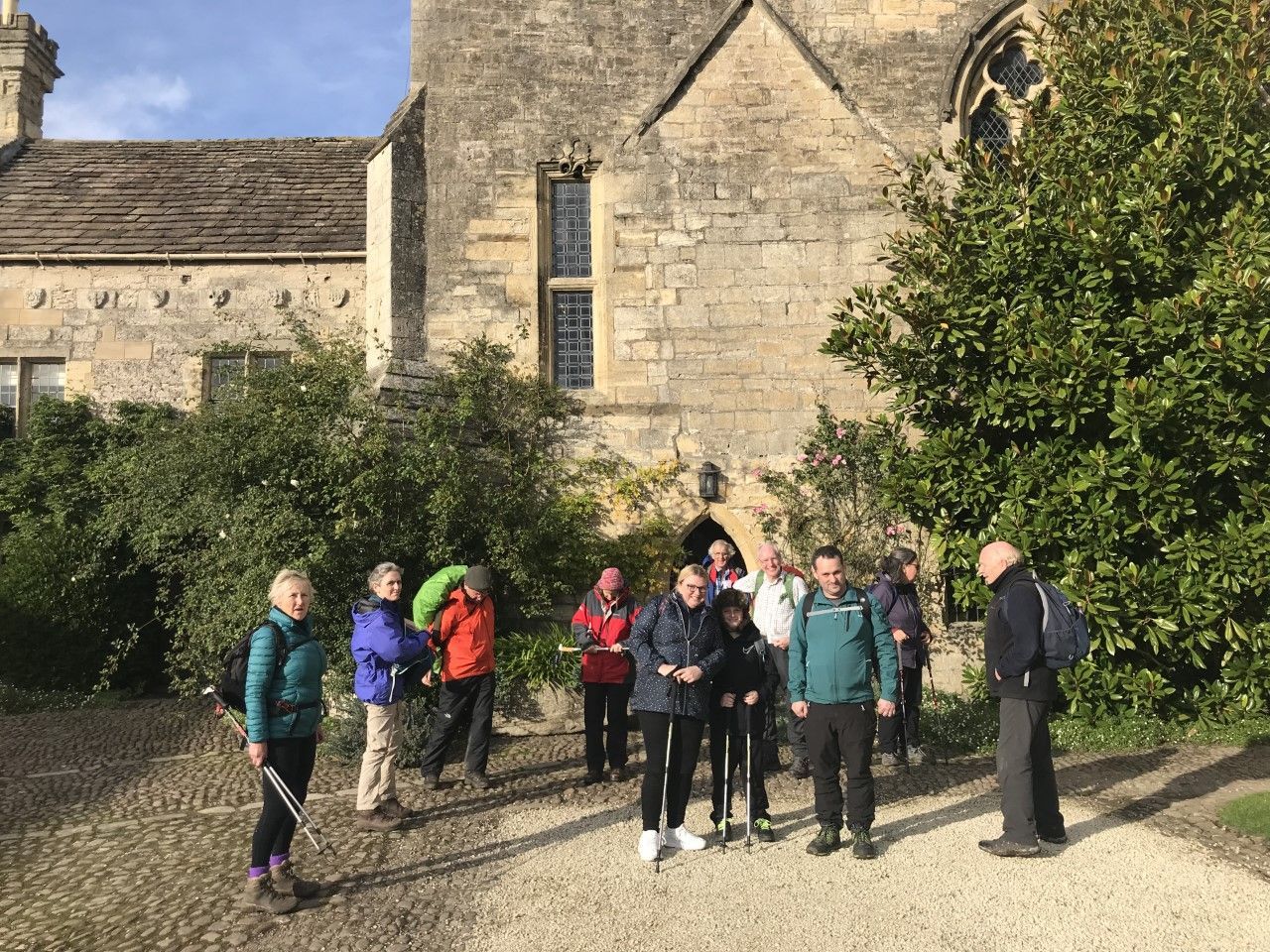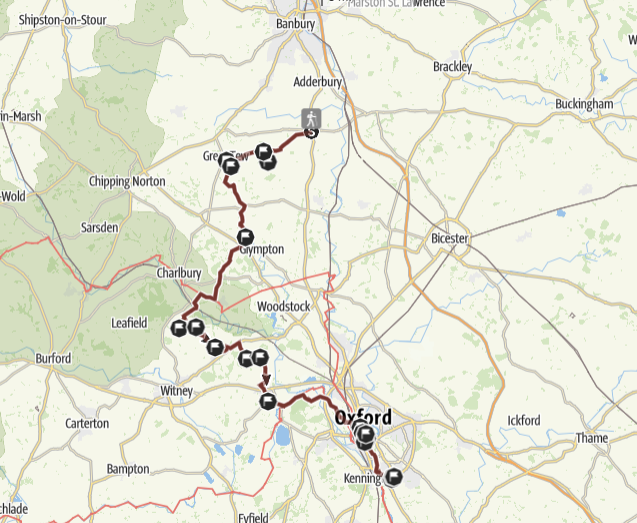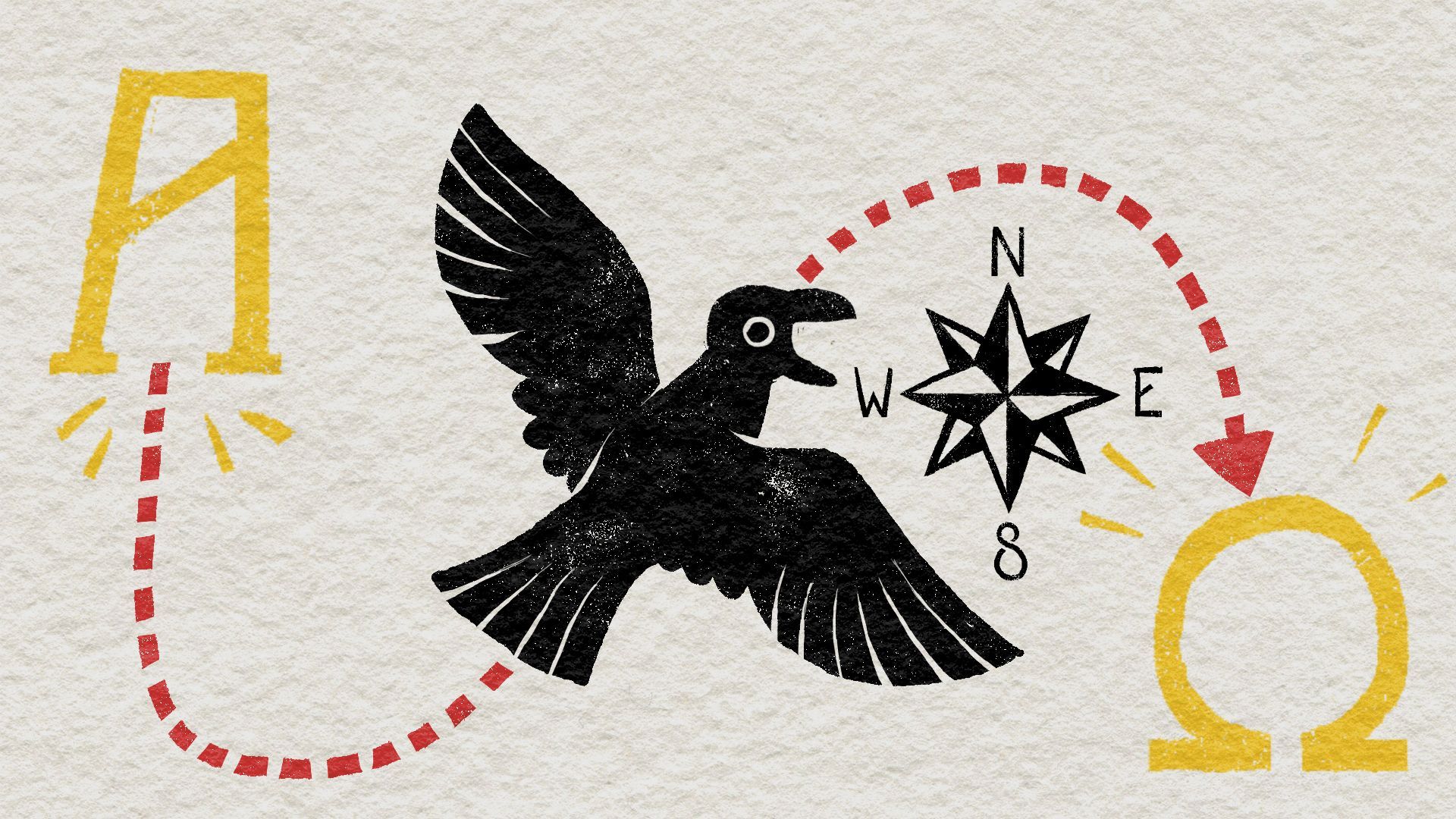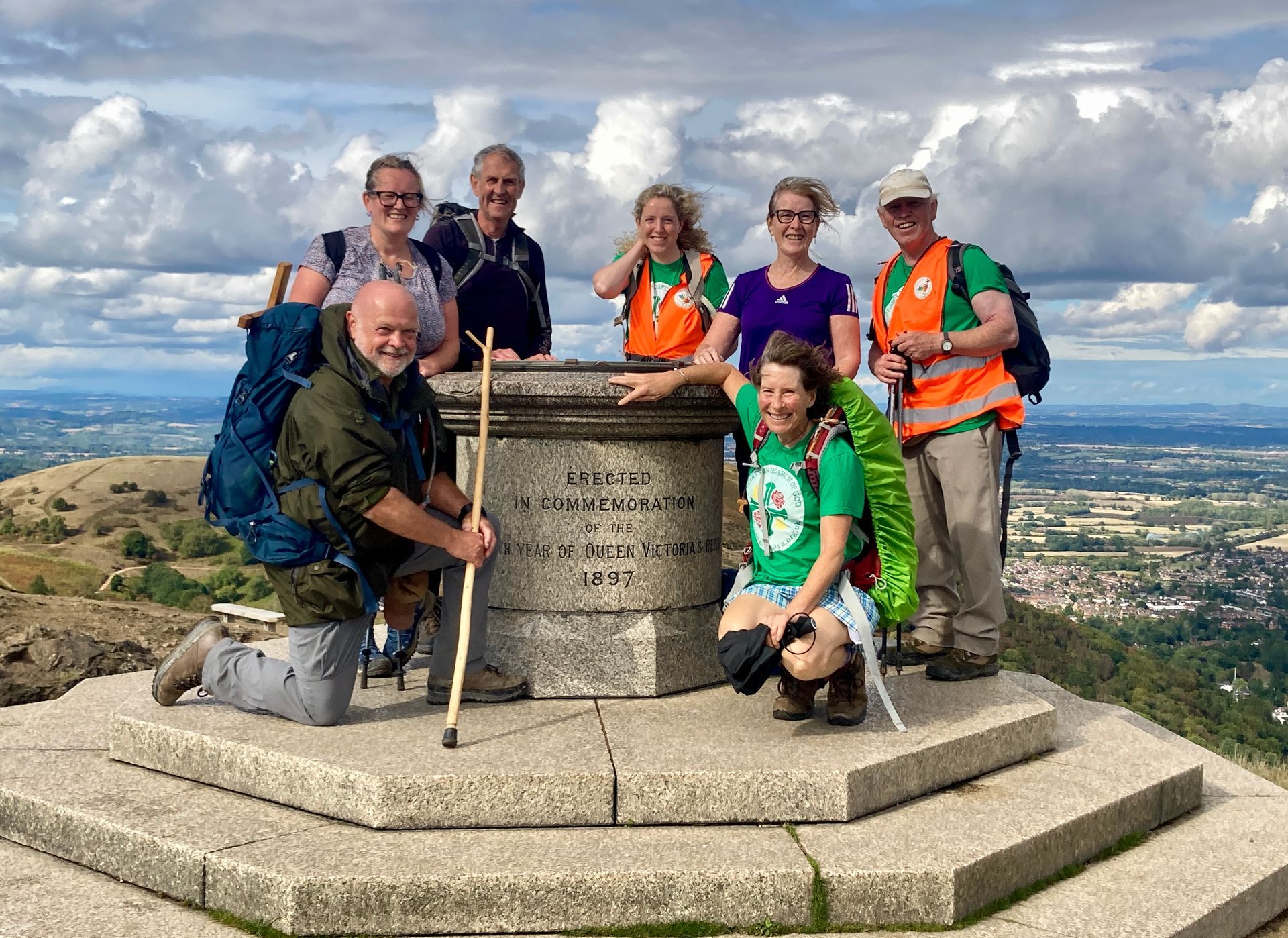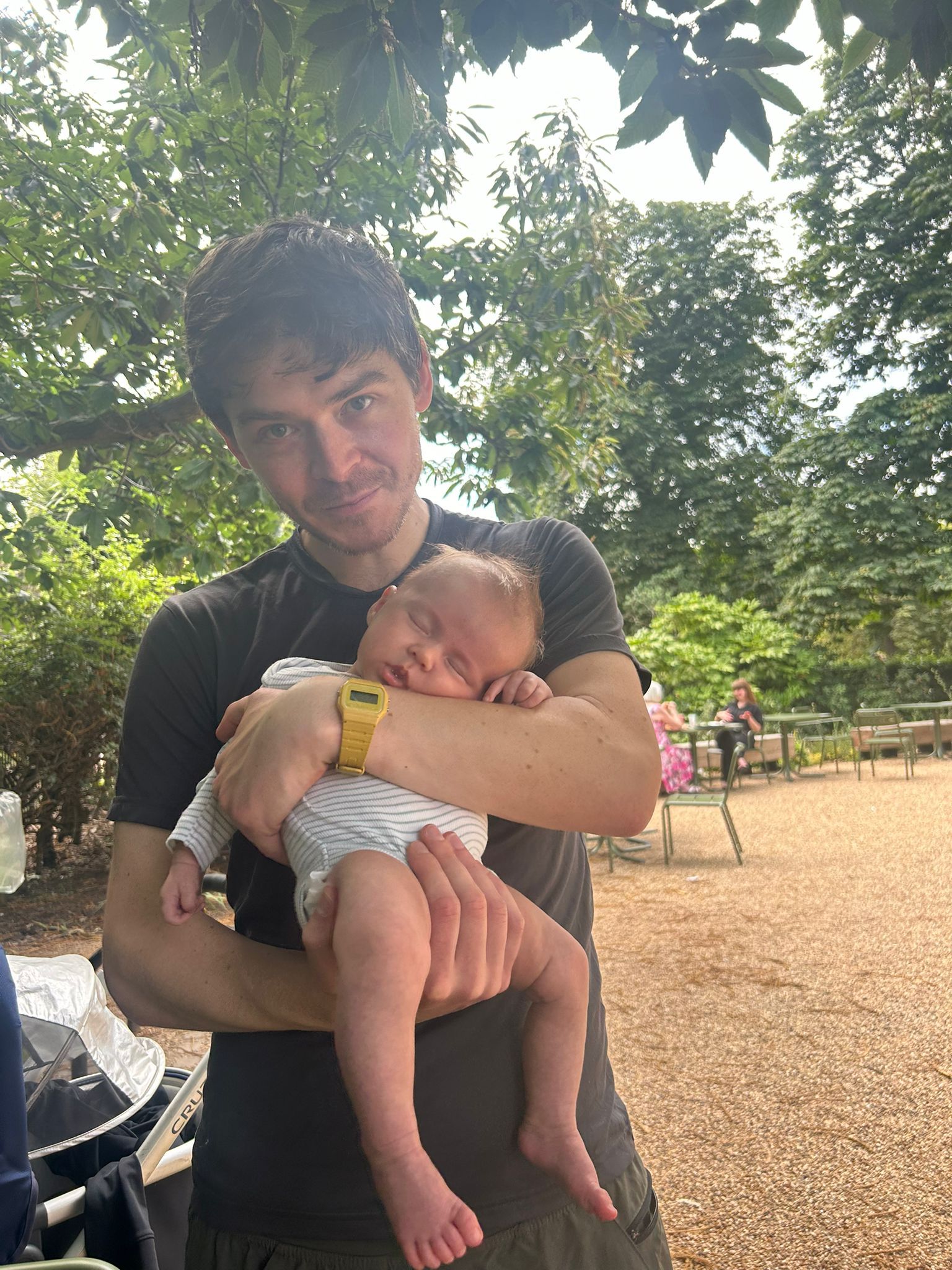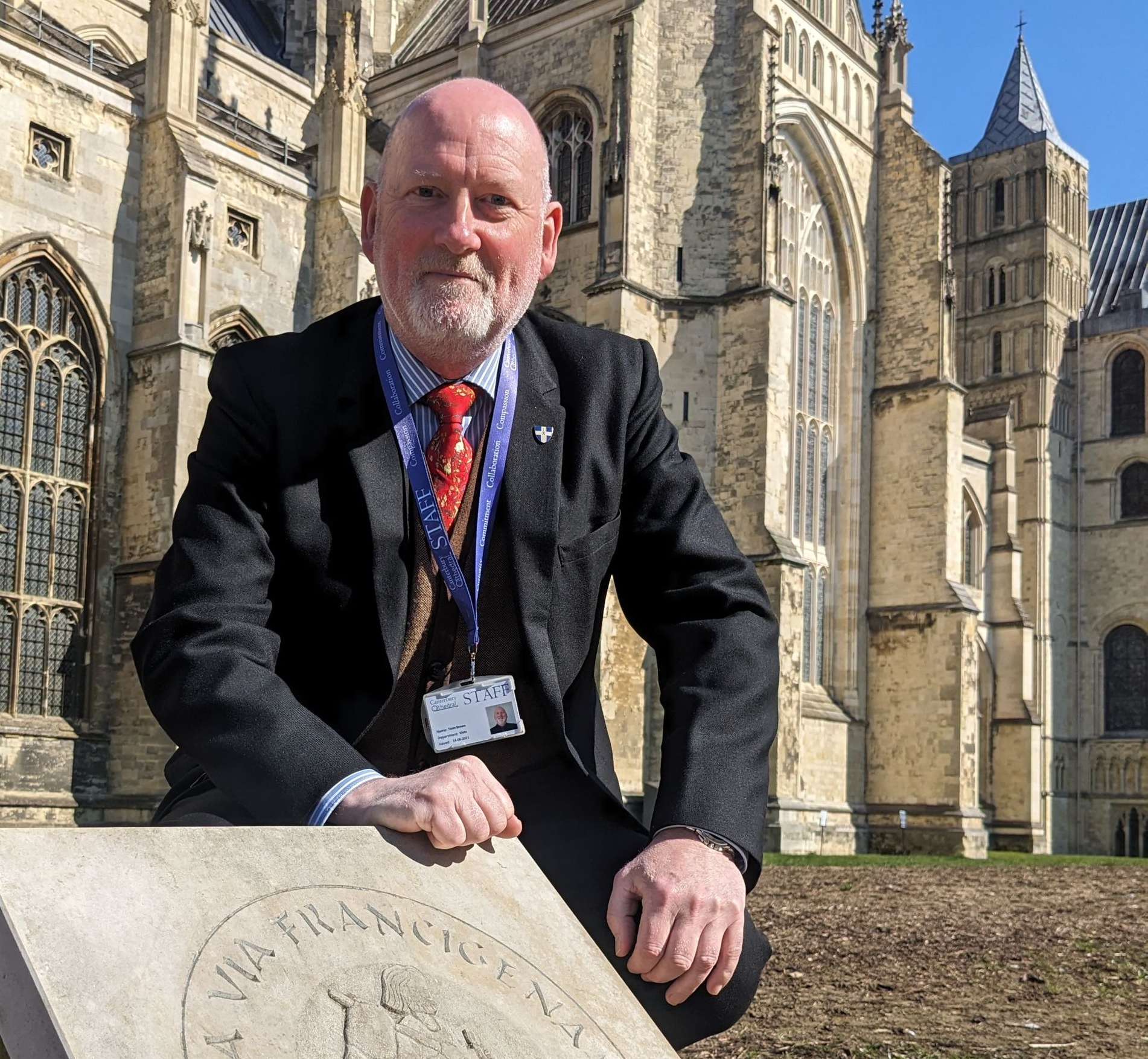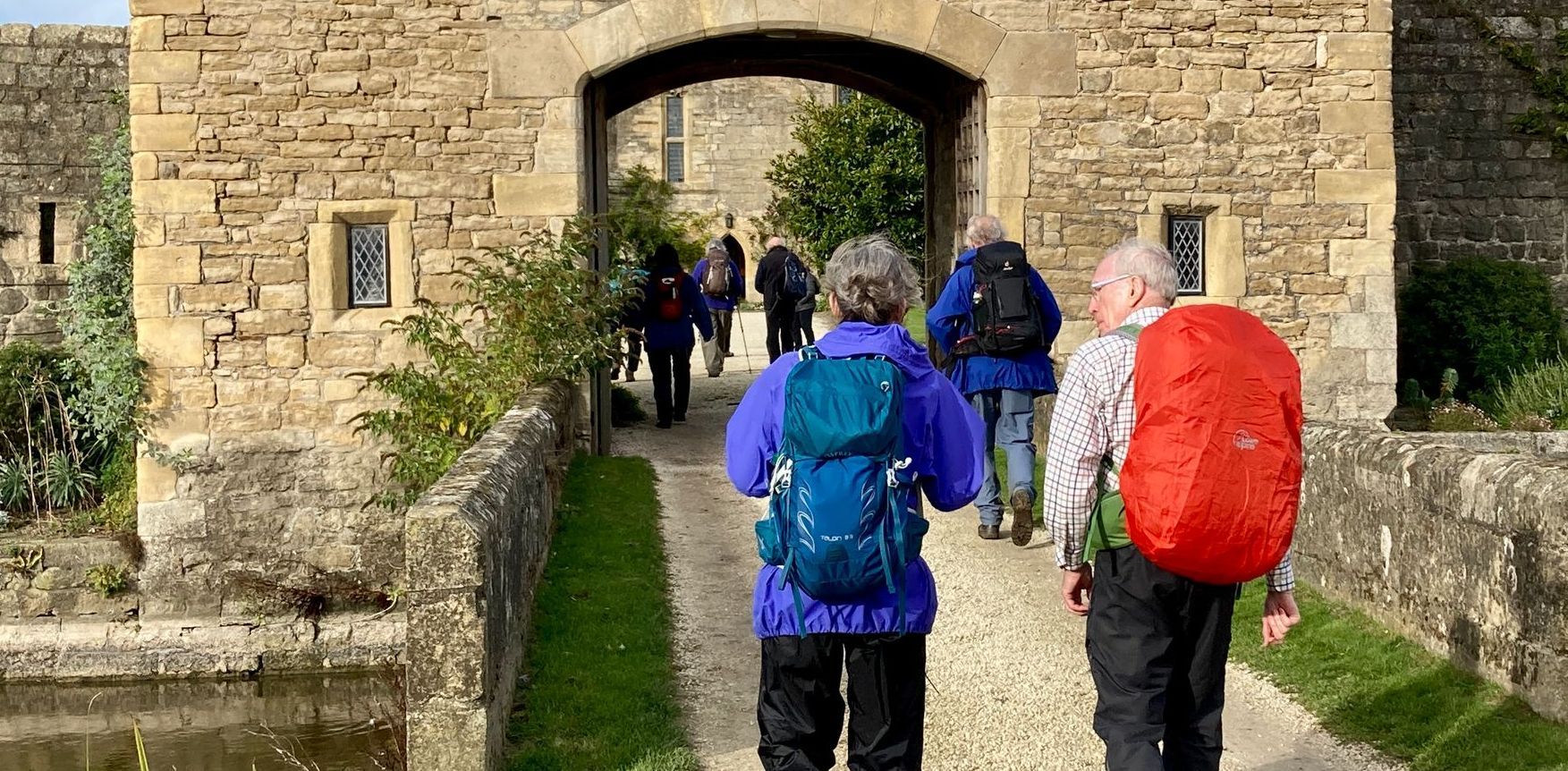Walking the Becket Way to Canterbury
A Pilgrimage in Advent 2021
Introduction
I have long wanted to walk the Pilgrims’ Way from London to Canterbury. When I was growing up we had a book about the route in the house which I found fascinating. I asked my father if we could walk it together. He said “one day” but we never did, so I decided to undertake the pilgrimage in his memory during the Advent after his death.
Sunday 28th November - 1st Sunday in Advent: Southwark to Shooters Hill: 10.9 miles
I went to Mass at the Church of the Most Precious Blood in Southwark. I had lived in the presbytery for over two years during my time working for Caritas Social Action Network. The church had been renovated and was looking good, but the parish priest had decided to introduce the Ordinariate rite into a parish serving a cosmopolitan bunch of Catholics, few of whom I suspect had heard of the Church of England let alone the Ordinariate. This was the first week of the experiment and the Anglican prayers and antiquated language met with some confusion and few signs of enthusiasm.
I had already visited Southwark Cathedral and had my pilgrim passport stamped there so I picked up lunch in Borough Market and set off along Borough High Street on a bright winter’s day. I passed St George’s Church, where Henry V stopped on his way back from the Battle of Agincourt after visiting Becket’s shrine in Canterbury. The route follows the Old Kent Road, passing the historic Thomas a Becket pub where in the Canterbury Tales the pilgrims drew lots to decide who would tell the first tale. More recently Henry Cooper trained in a gym upstairs. Now it’s a Vietnamese restaurant, but the pub sign survives. I passed the two New Cross stations and then Deptford to reach Blackheath where I stood at the viewpoint looking back to the City and Southwark.
It was getting colder, and it was good to have a brisk walk across Blackheath and then up Shooters Hill. It was cold and I wanted a cup of tea, but nowhere was open. On the southside of the road was the impressive former Royal Herbert Hospital which was the first specially built military hospital in the country and the first, military or civilian, to utilise the pavilion design. It was inspired by Florence Nightingale and the architect was her nephew. Today it houses a leisure club and is being redeveloped as luxury flats.
I turned off the route and found my Airbnb in a terraced 1930s house just south of Eltham Common. Cherry, the owner had told me she would be out, so I found the key in the porch and let myself in. I was surprised that the radio was on and then to find a young woman cooking in the kitchen. She was a long-term lodger called Reza from Lithuania. The bedroom was tiny and had no tea making facilities, so I had a shower and set off to find somewhere to eat. I had a drink in the Red Lion, a noisy sports pub, but they had stopped serving food, so I went back down the hill and ate in a small Turkish restaurant.
Monday 29th November: Shooters Hill to Dartford: 14.8 miles
Next morning I met Cherry who told me of her Sunday afternoon’s adventure. A female friend who had been a fashion enthusiast had died recently and the bereaved husband had invited Cherry round for lunch and to choose any of her friend’s clothes she might like. Cherry gleefully showed me her loot: a stylish new coat, hats and some dresses. She speculated about how much the husband had spent on her late friend’s wardrobe and I got the impression she might be going back for the widower himself.
I set off early on a cold crisp morning across Eltham Common to Oxleas Wood where I had breakfast in a café. It was a friendly place, but the food was dull. I bought some bread pudding for lunch, which turned out to be a fortunate decision. The route took me down Shooters Hill, into Bexley, through suburban backstreets and woodland to reach the ruins of Lesnes Abbey, near Erith.
The morning had been delightful, and I decided to stop at the Abbey café for a coffee. I ordered and tried to pay when to my horror I couldn’t find my wallet. I emptied my pockets, checked the rucksack and searched the area, but no wallet. I rang Cath and cancelled the credit card, but I had also lost my ID, my cash and all my other cards. It wasn’t at the café and I had walked over 5 miles since then and the wallet could be anywhere along the route, much of which was woodland deep in dead leaves. There was no point in searching.
I drank my coffee and found two £1 coins in my trouser pocket. I offered them to the young woman serving, but she shook her head kindly: “Don’t worry, dear, you might need them”. I had been transformed from an independent hiker to a helpless object of pity, but I was determined to go on with the pilgrimage. The first plan was to get emergency cash from Ed’s account at a Tesco cashpoint machine in Erith.
I marched on, over the railway and busy A206, past the squat Erith Church to reach the Thames. Near here pilgrims from East Anglia once landed by ferry. There is still evidence of navigation on the river, but the waterfront is desolate with huge concrete tidal defences. I strode on through the dismal town centre and found a Tesco’s. Unfortunately the cash wouldn’t transfer, so my next hope was to could convince Nationwide in Dartford to let me have some money from our account.
I spent my last change on a drink, ate my bread pudding and strolled out across Crayford Marshes to the west bank of the River Darent, which flows into the Thames at Erith. This tributary would take me south to Dartford and then on to Otford the following day. The riverside path was diverted through an industrial area and then onto busy roads and finally the suburbs of Dartford. There I found a branch of Nationwide where the helpful manager allowed me to withdraw £250 despite my lack of physical ID. To compound the difficulties of the day I could not find my blood pressure medication. It took a forty-minute argument in Boots before the pharmacist would give me seven tablets as an emergency supply. My humiliation was complete when I found my tablets between the rucksack and the inner waterproof liner.
My overnight stay was at the eccentric Royal Victoria and Bull Hotel in the centre of Dartford. It’s a former coaching inn with rooms off a high bar area. Jane Austen and Queen Victoria stayed there. Unfortunately the manager wouldn’t accept a bank transfer, so I had to erode my precious supply of cash. They had no draft beer due to delivery problems, but the chilli con carne was good.
Tuesday 30th November - St Andrew’s Day: Dartford to Otford: 13.5 miles
The day was cloudy and there had been overnight rain, but I set off along the River Darent, passing a metallic silhouette of local lad Mick Jagger. The way passed graffitied bridges, much litter and a depressing amount of dog poo collected in little black bags and hung decoratively on wayside fences. Despite all this the river itself was remarkably unpolluted.
Once past the M25 the landscape became more rural with villages and small holdings. At South Darenth I stopped for coffee in a café and bought lunch. The café was opposite a former paper mill with an impressive chimney. It’s now flats. I walked on beside ponds to reach Farningham, where an ancient cattle screen crosses the river, and then along quiet lanes to reach Eynsford village. Here a recollection came back to me. One day when I was perhaps six years old my father and I went out for the day. He drove our Morris Minor and I sat in the back but pushed the front passenger seat forward and leant on that to talk to him as we went along. We first went to a cricket match and I recall sitting by the low fence. Then we went to a river and he lay on the bank and went to sleep while I paddled under a bridge and fished for minnows.
I had always thought that the location was nearby Otford, but when Cath and I visited that village a year or so before, it was clear that it wasn’t the location. Reaching Eynsford I realised that this was the place. I sat on a bench, ate my lunch, and wondered why he had taken me on this trip. It was unusual for just the two of us to go out, which must be why I remember the day. Then I spotted a sign to a sports club and walking up the lane came across the cricket ground from my memories. I expect that Dad had some reason for wanting to see the match, but that I had become bored and so he took me to the river to let me paddle as a diversion.
I retraced my steps back to the route and walked on to reach Lullingstone Roman Villa, which I visited. It dates from AD80. The family became Christians in the 4th Century and turned a room into a chapel. The impressive ruins are well maintained and explained. The Way took me on past Lullingstone Castle, once home to Henry VIII’s jousting champion, and still inhabited by the same family. Then on through pretty Shoreham with its artistic history and impressive church. In a single day’s walk I had passed a Roman Villa, Saxon and Norman churches, a Tudor gatehouse, and ancient Sir Mick.
There was a final section past a stud farm to reach Otford with its famous duck pond roundabout complete with a duck-house and a plethora of tearooms. Here the route from London converges with the longer path from Winchester. My destination was an Airbnb about a mile beyond the village on the original Pilgrims’ Way which is a busy lane at this point. I was welcomed by Laura and shown to a warm, comfortable annex of her detached 1920s house. She and her husband had four boys, but sadly one had died of leukaemia. When she realised I was walking she kindly brought me two freshly baked pain au chocolat for breakfast as well as her normal provisions. That evening I ate in a good Indian restaurant about 10 minutes’ walk away.
Wednesday 1st December: Otford to Wrotham: 6.3 miles and a visit to Rochester Cathedral
Laura had warned me that the “4x4 school run mums take no prisoners” so I took the backroads through Kemsing village rather than risk the official route. I have happy memories of Kemsing from stays at the Youth Hostel in the 1970s with school friends and my YHA group, but sadly, like so many, it’s closed now. The village is still delightful with arts & crafts houses around the ancient St Edyth’s Well, which commemorates the birth of the saint in 961 AD.
I visited the Church of St Mary, with its plain flint walls and square tiled tower. Inside it was an unexpected Anglo-Catholic gem with a restored rood screen and richly decorated choir and sanctuary. Several parishioners were decorating the church for Christmas and they were keen to hear about my walk and to stamp my pilgrim passport. I marched steadily on through the grounds of the impressive St Clere mansion, home of two former Governors of the Bank of England, and soon reached Wrotham. I checked into the Bull Inn, decorated with RAF memorabilia in honour of the many World War Two fighter pilots who visited from the nearby bases at Biggin Hill and West Malling. They would celebrate their victories in the bar and put stamps on the ceiling to mark each enemy plane downed.
It was early in the day, so I decided to take the bus and train to Rochester to visit the Cathedral. The bus arrived a bit late and I got on, but the driver could only accept cards. I explained why I only had cash and he kindly agreed to take me to Meopham station. There I was able to buy a return to Rochester using a £10 note.
The approach to Rochester was impressive, with views of the river, castle and Cathedral. There was a short walk up the pedestrianised main street, lined with interesting shops, to the Cathedral. Unfortunately for me they were holding a school carol service, but a kindly verger stamped my card and gave me a limited tour of the highlights.
The Cathedral is England's second oldest, founded in AD604 by Bishop Justus. The present building dates to 1083. There is a glorious Norman nave and one of the finest Romanesque facades in England. It became a major place of pilgrimage in the 13th century, following the death of William of Perth, a Scottish baker who was murdered nearby. His body was brought to the Cathedral and at his shrine, of which no trace remains, miracles were reported. I climbed the Pilgrim Steps, worn by the many thousands of medieval pilgrims.
I returned to Meopham by train but found there was no bus back to Wrotham for 90 minutes. Even then the driver might not let me travel for free. It was cold and there was no shelter or café, and this felt miserable until I remembered that I could pay for Uber using PayPal. I called a taxi and arrived back at the Bull in comfort and style.
Thursday 2nd December: Wrotham to Aylesford: 13.7 miles
It was possible for me to pay for my food and accommodation using the details of Cath’s credit card which relieved my money worries. Before leaving Wrotham I visited the 13th Century parish church of St George, with its impressive wide three aisles and rood screen. Thoughtfully there was a stamp for pilgrims to use.
It was a cold, clear morning with blue skies. I crossed the main road and followed paths across fields mostly given over to sheep. It was an idyllic English pastoral stroll hugging the contours of the hill. To the right and below me was the flat land of mid Kent, and above and to the left ancient woodlands covered the rising North Downs. The path rose to the hamlet of Upper Halling and then fell to cross the main road and railway to reach Halling itself, on the west bank of the River Medway. I bought a pork pie and an apple in a corner shop and sat munching these with Halling church behind me and the River in front. Occasional sea gulls swooped hoping for crumbs. Grannies pushed prams. It was beautiful and bracing.
Just in front of my picnic spot there was a ferry to the east side of the river and medieval pilgrims to Canterbury would have used it. It closed in 1963 so I took the route south through a modern housing estate, via a new road bridge over the Medway, then into Peters Village, a development of 1,000 homes between the river and the old Peters cement works. After the lonely Burnham Church the route was rather desolate, running between solar farms, disused industrial buildings, marshland and finally a sewage works.
I arrived in good time at Aylesford Priory, which is run by the Carmelite Friars. This is another place with memories for me, this time of primary school outings and of (rather boozy) secondary school retreats to the nearby Allington Castle, then run by the same Order. Aylesford was the principal house of the Carmelites from their arrival in Kent in 1242 until their expulsion under Henry VIII in 1538. They returned in 1949, restored the fine medieval courtyard and created new shrine chapels with striking modern ceramic artworks.
There were only three guests because of the pandemic, so a wing of the guest house to myself. My reading material had run out, but I found Bernard Cornwell’s Sharpe’s Trafalgar in the common room and luxuriated in a deep bath reading it. It was page turning stuff with evocative descriptions of life on board a Royal Navy warship of the times. Later I joined the community for Evening Prayer then wandered down to the village to eat in the pub.
Friday 3rd December: Aylesford to Lenham: 15.3 miles
I had an excellent breakfast in the Great Hall and set off on a cold, misty morning across industrial landscape to reach muddy fields. The route passed under the main A229 and up to reach a service station where I bought my lunch. Then on through woodland and across vineyards. Chapel Down has leased 388 acres of farmland in the area and plans to develop the largest vineyard in England. I saw many vines, and few hops during the rest of my walk,
At the village of Boxley there was a pub (closed) and church (open) but at Detling the church/pub situation was reversed, and I had a welcome coffee at the hospitable Cock Horse Inn which dates from the Tudor period. After Thurnham the Pilgrims’ Way mainly follows small, metalled lanes, and so the walking was dull for the rest of the day. The North Downs Way takes a higher route on footpaths, and this may be a better choice. After passing to the north of Harrietsham the Way skirts the former Marley tile factory. Tile production has ceased on the site, but something was going on. It was a relief to drop off the route and to arrive at bustling Lenham, which has a square, several pubs and a fish restaurant as well as a range of shops. It’s a small place but had the feel of a small market town. I was given a room in a modern annex to the Dog & Bear. I ate in the restaurant: the food and service were excellent.
Saturday 4th December: Lenham to Chilham: 13.3 miles
I set off back uphill to the route, this time on tracks. Just east of Lenham was a large cross, cut in the hillside to reveal the chalk. This is a memorial to those from the parish who died during the First World War. It was constructed by volunteers from the village, who excavated it by hand. Nearby was a wreath commemorating fifty-two men of the REME who were killed nearby by a V1 flying bomb in June 1944. Eighty more were injured. Their CO wrote:
“It was a beautiful sunny morning and there was no need for us to jump out of bed on Reveille. I was in the stables, used as a washroom, shaving, when I heard a noise, looked up and saw a doodlebug coming towards us. It was being shot at from behind by a fighter-bomber. I started shouting, “Take cover, take cover”. Then it hit the camp. The bomb struck the corner of a Nissen hut housing the soldiers. The blast took me off my feet. I picked myself up and wandered round to where the camp was, and it had all disappeared. The huts were all mangled together. There were blokes bombed to pieces, ripped apart.”
An active service burial took place that night in a mass grave in Lenham cemetery to avoid the risk of damaging morale. It must have been a ghastly business. I’m glad that seventy-seven years later someone took the trouble to hand write that note of remembrance and to climb the hill to place the wreath. The clouds lifted, raising my spirits, and a good track took me over gently rolling hills with views of the Great Stour River below and to the right. The wooded slopes of the North Downs were above and to the left.
I made good time and reached Boughton Lees by lunchtime. This was an open settlement around a triangular village green with a cricket pitch. On the north side was the Flying Horse pub. I left my rucksack on a bench outside and went in to buy some beer and crisps. The staff welcomed me warmly. Then I sat contentedly in the winter sunshine sipping the local bitter and eating my lunch. I felt blessed to be living in this time.
Boughton Lees is not a pretty village; no tourists will visit, but that day it was a perfect English scene of rural calm and unassuming homely buildings. As so often there were traditional features with historic roots: the round topped pub windows are called `Dering windows` in memory of Sir Edward Dering who escaped through a similar window during the English Civil War. They are characteristic of the few surrounding villages.
After lunch I wandered up the lane, conveniently named `Pilgrims Way` and took a path through woods to the isolated Boughton Aluph church. The porch has a fireplace which may have been provided for pilgrims to warm themselves. The Way joined the main road for a mile or so, and then diverged at the well-kept Godmersham Park estate, now the home of the British Dispensing Opticians College. There followed a section of the Way through woods that must have been unchanged for centuries and gave me the feeling of following in the footsteps of generations of pilgrims to Canterbury. Finally the path skirted the impressive Chilham Castle and brought me to the centre of the charming village of Chilham.
As I arrived in the village square the church bells were pealing, and people were walking down to the church. I followed them in and found a wonderful display of Christmas trees going on. Each one was sponsored by a local club or business and the collective effect was beautiful. There was cake, tea and mulled wine and a choir sang carols. The welcome was warm and genuine, and it was obvious that the parish was at the heart of the community. There was a pub beside the churchyard which had music on that night, but I stayed at the Woolpack Inn at the bottom of the main street in a cosy upstairs room.
Sunday 5th December – Second Sunday of Advent: Chilham to Canterbury: 10 miles
I had a quick early breakfast and set off briskly towards Canterbury to be in time for the 11am Mass at the Catholic church of St Thomas a Becket. The route was over rolling hills through apple orchards and a few fields for hops, passing caravan parks for migrant apple pickers. They were well maintained and organised and run by Romanian management. There were helpful signs telling the pickers about local facilities and sources of help. Soon there was my first view of Canterbury before the lane dropped down to Bigbury Oast.
I marched on through the outskirts of Canterbury and achieved my objective. The Mass was well attended with a youngish congregation. Afterwards the parish priest stamped my pilgrim passport. He had celebrated the requiem masses for my parent’s friends John and Maureen Sullivan and remembered them fondly.
The entrance to Canterbury Cathedral visitors’ centre said `Welcome` but was firmly locked, but there were people coming out of the exit, so I went in through the exit. I was stopped immediately, but when I explained that I was a pilgrim they welcomed me, stamped my passport and ushered me into the Cathedral precincts. Despite a lot of scaffolding it looked magnificent in the watery sunshine. The Holy Communion congregation had gone, and the tourists had not been allowed in, so I had the place to myself. The Cathedral was almost silent, and incense scented the air. Canon Andrew met me at the former shrine of St Thomas a Becket and said a prayer with me.
After visiting the shop and buying a few presents I spent my last few pounds on a delicious bowl of celeriac soup and set off for the station and the train to London. I had bought my ticket using PayPal but hadn’t realised that it was necessary to get a physical ticket using a credit card, which I did not have. The man in the ticket office was rude and totally unhelpful but his colleague on the gate let me through, warning me I would be liable for a penalty if accosted by a ticket inspector. A fine I would have no means of paying of course. Luckily there was no need to show my ticket on the train or at Beckenham Junction station.
I stayed that night at Mum’s house. Cath gave me the good news that a letter had arrived from the Metropolitan police informing me that my wallet had been found and could be collected at Plumstead Police Station. Next morning I got the letter printed off and took an Uber because public transport would have taken hours. To my great happiness I was reunited with my wallet, including the cash. The only fly in the ointment was that the kind person who had handed it in had left the wrong phone number, so I was unable to thank her. I walked out and, wanting to share my good fortune, treated the next homeless person I came across to a large coffee and a chicken bake (her choice, not mine).
Reflection
It had been a wonderful journey, despite the problems caused by my carelessness with my wallet. The Way had been easy to follow and full of interest. The Cicerone guidebook was excellent with just the right level of background information. The weather had been kind and the accommodation comfortable. I had eaten and drunk well and my kit had worked.
Undertaking a pilgrimage in Advent means that the daylight hours are short, and the weather could have been a problem. The positives are the lack of tourists and the challenge of the season. Any minor privations and difficulties were a good way of preparing for the joys and excesses of the Christmas season. I would walk the Pilgrims’ Way again or undertake another Advent pilgrimage. The solitude of the walk was a balm before the busy time ahead.
During these days I often thought of the tragic fate of the twenty-seven migrants who had drowned in the English Channel when their inflatable dingy capsized just four days before I set off. They were travellers as I was, but I contrasted my own privilege, good fortune and happy solitude with their desperate plight. I read of the proposed measures to prevent such disasters in the future from politicians and commentators from across the political spectrum. Nothing sounded realistic or likely to be effective. I could only be honest and accept that I did not know what could be done either. I can only hope that some way of managing the issue of migration will be found.
